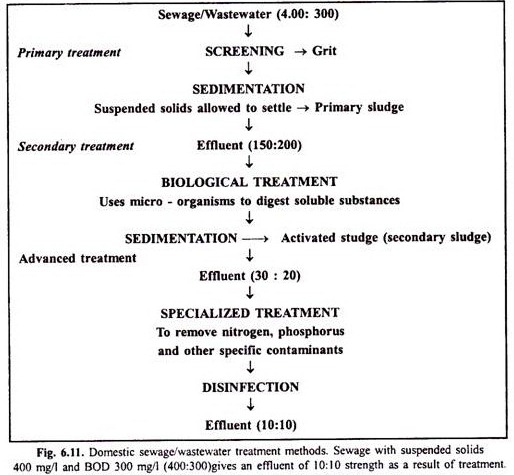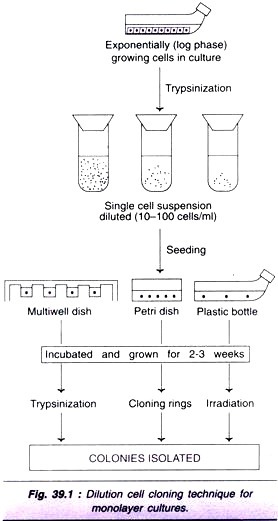Human Reproductive System: Male and Female Reproductive System!
Changes in the human body:
When a baby begins to grow, the different parts of its body such as the head, arms, legs and chest grow at different rates.
For about the first 12 years of its life it goes through a phase of body enlargement and mental development.
During this phase its reproductive organs develop at a slower rate.
At about 12 years of age, body enlargement slows down and certain other changes begin to appear. These changes prepare the body for sexual reproduction. This phase is known as adolescence.
During this phase, certain parts of the body change in appearance and the person also experiences new sensations such as extreme happiness, sadness, anger, insecurity, and so on. All this is due to the beginning of the secretion of hormones from the ovary and testis.
The age when this begins is called the age of sexual maturity (puberty). It varies from person to person. It is marked by the growth of thick hair in the armpits and pubic area. In males, facial hair begins to grow.
The vocal cords become wide. Therefore, the voice begins to deepen. The testes become active and begin to produce sperms. The penis and scrotim become larger. In females the menstrual cycle begins and the breasts become enlarged.
These changes are slow and take place over six years or so. They serve as signals identifiable by other individuals that sexual maturation is taking place. From this period onwards sexual reproduction becomes a possibility as the body becomes capable of producing the specialized germ cells that are needed for sexual reproduction. But childbearing and lactation (milk secretion) need the female reproductive organs and breasts to be fully developed.
Male reproductive system:
The male reproductive organs include the testes, seminal vesicles, penis and some associated glands such as the prostate gland.
Testis:
The most important male reproductive organ is the testis, which produces sperms. There are two oval testes, each contained in a protective bag called scrotum (or scrotal sac), lying outside the abdominal cavity.
The scrotal sac can elongate and contract depending upon the body temperature and external temperature. This is necessary because sperm formation occurs at a temperature lower than normal body temperature. The testes produce sperms continuously from the stage of puberty onwards.
Sperms from the testis pass through the sperm duct, known as vas deferens. The vas deferens runs interiorly up to the urinary bladder, from where it leads downward and is joined by a duct from the seminal vesicle.
The seminal vesicle is an elongated sac at the base of the urinary bladder. For each testis, there is one vas deferens and one seminal vesicle. The functions of a seminal vesicle are to store the sperms that have come from the testis and to secrete seminal fluid, or semen, in which the sperms float.
Prostate gland:
The sperm ducts from both sides join near the base of the urinary bladder, opening into a single tube called urethra (Figure 6.10). This junction occurs inside the prostate gland. The prostate gland adds its secretion to the seminal fluid. The urethra leads to the outside of the body through an organ called penis. It carries both urine and seminal fluid.
Penis:
The penis is a muscular, tubular organ made up of loose tissue with spaces in between. This is called erectile tissue. On being stimulated, the erectile tissue fills with blood, making the penis erect and firm, so that it may enter the vagina of the female and discharge the sperms.
Sperm:
The sperm is the male gamete. It has a head and a long tail, which helps it swim towards the ovum (egg).
Female reproductive system:
The female reproductive organs include the ovaries. Fallopian tubes, uterus and vagina.
Ovary:
The ovaries are a pair of small, oval organs in the lower part of the abdominal cavity. They produce ova. At the time of birth, a female already has thousands of immature ova in her ovaries. Many of these degenerate during childhood. The ova start maturing when the female reaches puberty.
Every 28 days, one of the ovaries releases an ovum. When an ovum is released from the ovary, it is taken up by a thin Fallopian tube (also called oviduct) through its funnel-shaped opening. The ovum is passed down the duct and into the uterus, which passes it out of the body through the vagina. The ovum is very small and, therefore, hardly noticeable.
Fallopian tube:
The Fallopian tubes, or oviducts, are a pair of thin tubes that lead from the ovaries to the uterus. Each Fallopian tube has a funnel-shaped opening near the ovary. It is lined by cilia. The movement of the cilia helps conduct the ovum down the Fallopian tube and into the uterus.
Uterus:
The uterus (womb) is a hollow, pear-shaped, elastic muscular structure. Its upper portion, into which the Fallopian tubes enter, is broader. The narrow lower portion, called cervix, consists of a ring of muscles. The uterus opens into the vagina through the cervix. A fertilized ovum (zygote) develops into a baby inside the uterus.
Vagina:
The vagina is a tube leading to the outside of the body through an opening called vulva. The vagina is the organ where the penis is inserted during intercourse for the discharge of sperms. It is also the passage through which the fully developed baby is born.
Fertilization:
When semen is discharged in the vagina during sexual intercourse, the sperms begin moving up the vagina and uterus, finally reaching the Fallopian tubes. But only one sperm enters the ovum. Most of the sperms die while climbing up the Fallopian tubes. A sperm can remain alive in the Fallopian tube for about 12 hours. In this span of time, if it meets the ovum, it is likely to enter the ovum. This is called fertilization.
Changes after Fertilization:
Implantation:
The fertilized egg (zygote) moves down the Fallopian tube and continuously undergoes cell division. Thus it forms a hollow ball of cells, called embryo. The embryo gets embedded in the wall of the uterus, which is thick and has muscles, glands and a large number of blood capillaries. This process is called implantation.
Pregnancy:
The developing embryo at first derives nourishment directly from the mother’s blood flowing in the vessels lining the uterine wall. In about three weeks, it starts absorbing food and oxygen through an organ called placenta. The placenta is a disc like organ in the lining of the uterine wall.
It has numerous villi, which are in direct contact with the mother’s blood flowing in the uterine wall. These villi provide a large surface area for glucose and oxygen to pass from the mother to the embryo and for wastes produced by the embryo to be passed into the mother’s blood. The embryo is connected to the placenta by a tube called the umbilical cord.
By eight weeks, the embryo starts showing human features and is referred to as foetus. The total period of embryonic development, from the time of fertilization to birth, is called gestation period. It is around 280 days, or 9 months, in humans.
Birth:
The wall of the uterus develops a thick layer of muscles during pregnancy. At the time of birth, the uterine muscles contract rhythmically and powerfully, causing labour pains to the mother. Finally, the baby is expelled by the contraction of the uterine muscles. This is called birth or parturition.
What happens when the egg is not fertilized?
If the ovum is not fertilized in the upper part of the oviduct, it keeps on descending and is finally passed out through the vagina. It remains in the body for about 24-72 hours. As an egg is released for fertilization every month, the uterus also prepares itself every month for the implantation of a fertilized egg. The uterus becomes thick-walled and spongy in order to nourish the embryo. If no fertilization takes place, the thick uterine wall is no longer needed.
So, it gradually begins to shrink. This shrinkage ruptures its blood vessels. As a result, blood and mucus ooze out of the vagina. This period, which lasts for 3-5 days, is called the menstrual period, and the process is called menstruation.
If the ovum is fertilized, it gets implanted in the uterus wall and embryonic development starts. In this case, the uterus continues to develop in order to hold the embryo. And in this case, there is no question of its shrinkage resulting in menstruation.

